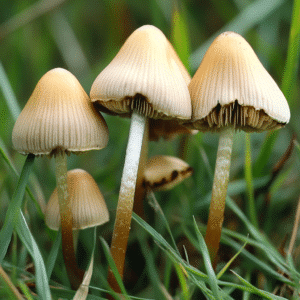The landscape of pain relief is a complex tapestry, painted with various modalities and nuances that seek to ease the suffering endured by millions. At the heart of this landscape lies morphine, an opioid with a mechanism of action both intricate and profound. MothersAgainstAddiction.org, a dedicated non-profit organization, serves as a guardian light for those whose lives have been shadowed by the specter of addiction. Within the compass of compassion, akin to the warmth of Brené Brown’s empathy and Elizabeth Vargas’s unyielding spirit, this article aims to elucidate the function of morphine in pain management, offering support to parents grappling with the nightmarish reality of a child’s journey through addiction.
Understanding Morphine Mechanism of Action
Diving into the cellular world, we find that morphine mechanism of action holds the key to its potent pain-relieving superpower. Morphine operates like a master impersonator, mimicking the body’s own endorphins by binding to opioid receptors, predominantly at delta-, mu-, and kappa-opioid receptors. The net result is akin to dimming the volume of pain, creating an ambiance of analgesia, anxiolysis, and euphoria, alongside the less celebrated effects of sedation, respiratory depression, and those notorious tummy troubles.

La Morfina: Decoding the Pain Relief Process in the Human Body
Calling it ‘la morfina’ adds an exotic flair, but make no mistake: its functionality is universal. Morphine hails from the poppy plant, an organic façade that belies its chemical complexity. The drug’s natural derivation has significant bearing on its chemical structure, which, in turn, is instrumental in its analgesic capabilities. It’s this structure that allows morphine to be such a fitting puzzle piece in the body’s receptor sites, signaling to the brain, “Hey, take it easy, the pain’s on leave.”
| Aspect | Details |
|---|---|
| General Mechanism of Action | Morphine activates descending inhibitory pathways of the CNS and inhibits nociceptive afferent neurons of the PNS, thereby reducing nociceptive transmission and decreasing the perception of pain. |
| Specific Receptor Activation | Morphine primarily activates three types of opioid receptors: delta-, mu-, and kappa-opioid receptors. These receptors are involved in a variety of physiological processes including analgesia, anxiolysis, euphoria, sedation, respiratory depression, and gastrointestinal smooth muscle contraction. |
| Central Nervous System (CNS) | Morphine binds to mu-opioid receptors that are widely distributed throughout the CNS, including the dorsal horn of the spinal cord. This binding leads to the hyperpolarization of postsynaptic neurons, reducing pain signal conductance to the CNS. |
| Peripheral Nervous System (PNS) | Morphine inhibits nociceptive afferent neurons in the PNS, which contributes to decreased nociceptive signaling towards the CNS. |
| Effect on Pain Perception | Morphine suppresses pain-evoked changes in information flow within CNS pathways, altering the sensory and emotional experience of pain. |
| Endogenous Opioidergic System | Morphine and other opioids act on the endogenous opioidergic system, which is involved in setting pain threshold, controlling nociceptive processing, and modulating functions like gastrointestinal activities, endocrine and autonomic functions, and potentially cognition. |
| Reversibility by Naloxone | The effects of morphine on opioid receptors and pain transmission can be reversed by the administration of naloxone, which is an opioid antagonist. |
| Therapeutic Applications | Morphine is used intrathecally (IT) for effective pain management, specifically in severe cases when other analgesics are insufficient. |
| Non-Analgesic Physiological Effects | In addition to pain relief, morphine can cause respiratory depression—which requires careful monitoring of the patient—sedation, anxiolysis, and euphoria. It can also lead to gastrointestinal smooth muscle contraction, resulting in constipation, which is a common side effect of morphine and other opioids. |
The Nuts and Bolts of Mechanism of Action for Morphine
To get down to the nitty-gritty, the mechanism of action for morphine hinges on inhibition and activation. Imagine it as a double-agent: on one side, it taps the brakes on those pesky nociceptive afferent neurons in the peripheral nervous system; on the other, it fires up those inhibitory pathways in the CNS. These actions curtail that relentless barrage of pain messages, with an overarching policy of ‘keep calm and carry no pain.’

Morphine’s Efficacy in Managing Pain: How it Alters Perception and Response
Pain itself remains a misunderstood celebrity in the neurological world. It’s not just a sensation but an experience, an emotional narrative scripted by the brain. Morphine steps into this narrative, rewriting it by binding to those opioid-friendly hotspots – particularly the dorsal horn of the spinal cord, acting as an effective intrathecal (IT) therapy. With this in place, the concert of pain is abruptly muted, allowing for a sudden intermission of solace.
Morphine versus Other Analgesics: Mechanism of Action of Morphine Compared
If you fancy, morphine could be likened to a classic bike in a world increasingly populated by electric vehicles. It’s powerful but not without its risks. Other opioids and non-opioids have mechanisms as varied as keys on a piano. Some opt for similar receptor pathways, others play a different tune altogether, seeking alternate ways to ease the pain. These nuances are pivotal in deciding who gets which key to the pain relief locker.
Clinical Comparison: Nucynta vs Oxycodone
If you’re pondering the tug-of-war between Nucynta (tapentadol) and oxycodone, think about it like picking your fighter in “Mario Kart 7.” Nucynta embarks on a dual-action approach, not just tickling those opioid receptors but also inhibiting norepinephrine reuptake, a combo that might give it a slight edge in certain pain scenarios. Oxycodone, the heavyweight champ, sticks to the opioid pathway pure and simple, with a reputation for strength and efficacy.
Possible Side Effects and Risks
While morphine’s accolades in pain relief are well-earned, there are shadows to contend with. Side effects sprout up like unwanted weeds in a garden of relief: nausea, dizziness, and that notorious constipation. But the dark foliage that really catches our eye is tolerance and dependence, the harbingers of addiction. It’s a tightrope walk between pain relief and potential peril, leading many to ask for “hair follicle drug testing near me” as a measure for both safety and accountability.
Advancements in Pain Management: Beyond Morphine
The realm of pain management isn’t static; it’s as dynamic as the ebb and flow of the tide on a “Costa Rica beach resort.” Researchers tirelessly forge new links in the chain of analgesia, be it through novel pharmaceuticals or alternative methodologies, striving to enhance relief while keeping risks at arm’s length. This exploration orbits around the goal of maintaining morphine’s analgesic legacy, yet without the baggage it currently carries.
Safe Use and Monitoring: Ensuring Effective Pain Control with Morphine
Ringing in the ears of every healthcare practitioner is the mantra of safe use and careful monitoring, ensuring that morphine’s therapeutic embrace doesn’t morph into a stranglehold. It’s about getting the golden ratio right, akin to a chef achieving the perfect flavor balance. Educating patients, alongside shrewd prescription practices, could be the equivalent of a strategic game plan for keeping addiction at bay, similar to studying the “half life Of morphine.”
Conclusion: Morphine’s Role in the Future of Pain Management
As we stitch together our insights, the tapestry becomes clearer: morphine is a venerable actor on the stage of pain management, seasoned yet subject to the scrutiny reserved for celebs of a bygone era. Its mechanism, while effective, rings the bells of caution, reminding us that vigilance is paramount. Just as “Raffey Cassidy” showcases the bold evolution of acting, so too must we be prepared to evolve our strategies in combating pain. The future beckons with promises of new stars, but let us not forget the roles played by the classic leads.
Hence, as we move forward, let’s do so with the past in our hearts and an eye on the horizon, recognizing that entities like MothersAgainstAddiction.org play an integral part in ensuring that the future of pain management is not only effective but also safe and compassionate. The resurgence of hope, much like “Kelly Clarkson’s weight loss” journey, symbolizes renewal and the possibility of positive change. In the complex battle against pain and addiction, every drop of support counts, every bit of knowledge empowers, and every act of understanding heals.
Unraveling the Mystery: Morphine Mechanism of Action
Ah, morphine – the age-old elixir of relief, as ubiquitous in pain management as sand on a Costa Rica beach resort. Speaking of ubiquitous, did you know that morphine works its wonders by imitating our body’s natural painkillers? Yup, you heard that right! Morphine waltzes into the central nervous system and cozies up to opioid receptors like an old friend. This mimicry is akin to someone learning How To pass a hair follicle drug test by outsmarting the very system designed to detect intruders. Clever, isn’t it?
It’s fascinating to imagine each tiny molecule of morphine as a little Mia star of the medicinal universe, shining brightly as it latches onto those receptors, bringing a sense of calm and relief. And just like the unexpected triumph of Kelly Clarkson’s weight loss journey, morphine’s ability to significantly dial down pain is a chorus of triumph over discomfort. This powerful analgesic doesn’t just stop at numbing pain; it also tinkers with our emotions, sometimes leading to a feeling of euphoria. Imagine morphine like that unexpected wave at the beach that lifts you and then gently sets you back down, feeling a bit more blissful than before.
But let’s not get too carried away! Morphine is a siren that must be treated with respect. Used judiciously, it offers solace to those bogged down by pain, but like all strong medicines, it’s not without its twists and turns. Morphine’s magic has to be wielded by the experts, as carefully as a masterfully written plot twist, ensuring every dose is a stepping stone toward comfort, not an unexpected cliffhanger. Now, isn’t that a mind-bending peek into the morphine mechanism of action?

What does morphine show its action by acting on?
– Well, you see, morphine kicks into action by cozying up to opioid receptors—think delta-, mu-, and kappa-types—and this little reunion basically dials down pain, chills you out, gives you a buzz, makes you sleepy, slows your breath, and even tightens up your digestive tract. Like flipping a switch, it quiets down those screaming nerves.
What is the mechanism of action of morphine in the spinal cord?
– In the nitty-gritty of the spinal cord, morphine’s got a cool trick up its sleeve. It boosts the action of the body’s own “shush!” signals, all while telling those pain messages from your peripheral nerves to take a hike. The result? It’s like throwing a wet blanket over a fire alarm—pain signals just can’t make a big fuss.
What is the action of morphine on opioid receptors?
– Morphine jumps into action like a key in a lock on those opioid receptors. Once it’s in, it’s like a domino effect—bam!—leading to a whole lot of calm, less pain, and a feel-good high. But watch out, it’s like a bear hug that’s a bit too tight, so it can take your breath away and slow down your gut.
What is the action of morphine on the pain pathway?
– Ever had a pain path go suspiciously quiet? Morphine might’ve been the hush-master behind the scenes. It messes with the brain chatter, disrupting the pain signals’ road trip from your thalamus to your cortex. Pain’s still there, but morphine’s like, “Talk to the hand,” because the receptors just aren’t listening.
Is Dilaudid stronger than morphine?
– Is Dilaudid packing more punch than morphine? You betcha! It’s like comparing a heavyweight to a middleweight—Dilaudid comes in swinging harder and faster, making it a strong contender when morphine just doesn’t cut it.
What is the strongest pain killer?
– If we’re talking the heavyweight champ of painkillers, fentanyl’s the name to remember. Don’t let its size fool you; this tiny patch or lozenge packs a wallop, claiming the title of the strongest painkiller we’ve got in the medicine cabinet.
How does morphine affect the spinal cord neurons?
– Morphine’s got a backstage pass to the nerves in your spinal cord, tuning down the volume like a pro DJ on those pesky pain signals. It’s all about hyperpolarizing, which is a fancy way of saying the nerve cells chill out and don’t get so jumpy about pain.
Does morphine affect the spinal cord?
– Does morphine mess with the spinal cord? Oh, you bet—it’s like the peacekeeper in a rowdy crowd, getting those excited neurons to cool their jets and reducing the ruckus of pain signals marching up to your brain.
What is the action of opioids in the spinal cord?
– Opioids, like morphine, in the spinal cord? They’re pulling double duty. Not only are they blocking the screaming meemies of pain signals, but they’re also revving up the pain blockers your body has got in its own arsenal. It’s teamwork at its finest—go, team, go!
Where do opioids work in the spinal cord?
– Opioids strut their stuff right in the dorsal horn of your spinal cord, acting like bouncers at the pain signal party. They make sure only the mild-mannered signals get through to the brain’s VIP section. Too many rowdy pain signals? Not on opioids’ watch!




























